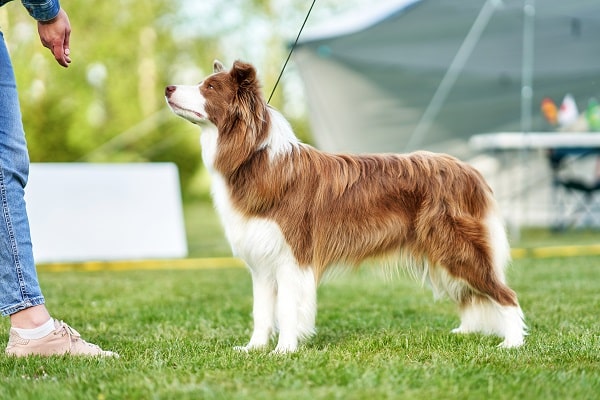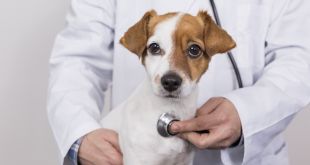Baldness in dogs can be a cause of Alopecia. Blame it on fleas, hormonal issues, and allergens. If you see abnormal hair fall or partial hair fall out, your dog could be suffering from an underlying health condition. Hair loss in dogs is a common problem and often found in the canines.
Severe or excessive hair loss is termed “alopecia.” Hair loss can happen from a single spot, in different areas, or all over the body. If your dog is also losing hair, you may wonder about its primary cause and how you can fix it.
Shedding coats are a natural phenomenon that can happen because of changes in seasons or other factors like changes in body temperature, stress, and nutrition. Shedding hair protects the dog’s skin from pollution and harmful sun rays or replaces old, damaged hair.
Some loose strands of hair may come out routinely during the dog’s hair growth cycle, but if your dog is scratching too much and bald patches seem to appear on the skin, it is not normal. It can be a sign of Alopecia.
What is alopecia in dogs?
Alopecia, which can also be described as abnormal hair loss or baldness, is a disease where the dog’s body cannot regrow hair when it falls out. It happens when the hair follicles are damaged. Usually, alopecia improves with treatment.
What are the causes of hair loss in dogs?
Numerous reasons can lead to alopecia in dogs. These are as follows:
- A dog can shed hair caused due to parasitic infestations like lice, fleas, mosquitoes, or mites. Insect bites can also cause severe skin irritations.
- Dogs can also develop food allergies, just like human beings. In such cases, their skin can itch severely, thus often leading to loss of hair.
- Not only food allergies but improper diet can also lead to dog hair loss. A deficiency of minerals and vitamins can cause hair fall.
- Environmental factors like hot or moist outdoors are responsible for fungal or bacterial infections in dogs.
- Ringworms are another potential cause of hair loss. If dogs have ringworms, red, flaky, and hairless patches will appear on their body.
- Some medical conditions can be the underlying cause of hair loss. Low thyroid hormone or high cortisol can be behind alopecia.
- Reactions from vaccines can produce alopecia.
- Genetics and autoimmune diseases can be the underlying cause of hair loss.
- Normal aging can also be a cause.
- Overgrooming or lack of regular grooming can be the reason behind hair loss.
While these are some common reasons behind alopecia, several others exist. A veterinarian is a person who can determine the specific cause behind hair loss in your dog. So, if your dog is losing a noticeable amount of hair or is scratching continuously, visit the vet to find out the actual reason behind such behavior.
How to understand that your dog is developing alopecia?
Symptoms of alopecia in dogs are not only about losing too much hair. They can also display symptoms like the ones mentioned below:
- Itchy skin
- Licking too much
- Dry coat
- Red patches surrounding the area of hair loss
- Inflammations
- Scaly skin
- Dark skin patches
- Bald spots
Alopecia, caused by hormonal issues or hereditary reasons, often shows no symptoms. Only there is a change in the dog’s coat. Other reasons for alopecia may show symptoms like inflammation, itchiness, or red spots. It is better to consult your vet if you find any such symptoms along with excessive hair loss.
What is the treatment of alopecia for dogs?
If your pet is showing signs of alopecia, do not panic. In most cases, alopecia is treatable. Your vet will examine your dog’s skin and try to understand if it has developed any infections. Along with the physical examination, the vet might request blood tests, biopsy, or skin scrapping for a detailed study of the skin or to find any underlying medical condition.
A blood test will reveal the overall health condition of your pet or if there are any allergies. It will also indicate if your dog’s thyroid level is normal. A microscopic examination of the skin will reveal yeast or bacterial overgrowth. The treatment for alopecia in dogs depends upon the underlying reason.
If skin infection is the reason, the doctor might suggest oral medicines. Anti-biotics, anti-fungal and anti-inflammatory medications are some common medications doctors suggest. If the thyroid is, the cause behind hair loss, treatment to reverse hormonal imbalance may lead to hair re-growth. If a food allergy triggers alopecia, then restricted diet and antihistamine medications can relieve the dog. Sometimes, the problem of hair loss can be treated with home remedies.
If the alopecia is genetic or because of an auto-immune disease, it is non-reversible. Indeed, the bald patch on your dog’s skin is not pretty to look at. But, alopecia in itself is not a life-threatening disease. The dogs can carry on their everyday activities with it. However, if the symptoms associated with alopecia, like itching, soreness, or dry skin, bother your pet too much, you can talk with the vet. They might suggest medicines that can relieve them and make them comfortable.
Are there any supplements for treating alopecia in dogs?
Several supplements available in the market claim to cure chronic skin conditions in dogs. Well, your vet is the one who can suggest if your dog will be benefitted from such supplements. However, many nutritional supplements have beneficial effects on dogs’ skin conditions. These are
- Probiotics
- Vitamin A
- Zinc
- Omega3 Fatty acids
- Melatonin
- Vitamin D
How can you prevent Alopecia?
Some types of alopecia can be avoided if the dog owner is careful and aware of the conditions. As a dog owner, you must be cautious about your pet’s nutritional well-being, food allergies, and environmental factors and keep the parasites out of it.
Other alopecia that stems from genetic factors, underlying medical conditions, or auto-immune diseases is not preventable.
Talk with your vet as soon as you suspect your pet is suffering from alopecia. The faster you know the cause of hair loss, the faster you can start the treatment immediately. With the right treatment, your pet will be happy and healthy again.
The most common form of treatment comes in the form of anti-fungal, steroids, and antibiotics. Vets can recommend medicated shampoos and allergic medications to manage the condition. Hair growth resumes when the condition is successfully treated.
Conclusion
If your dog is losing hair, it is important to determine the underlying cause and seek veterinary care. Alopecia can be a possible cause of hair loss in dogs, but it is not the only reason. Other factors, such as allergies, infections, and hormonal imbalances, can also lead to hair loss in dogs.
By conducting a thorough examination and necessary tests, your veterinarian can diagnose the cause and provide an appropriate treatment plan to help restore your dog’s hair. Remember, early detection and treatment of hair loss in dogs can prevent the problem from becoming more severe.

 DogExpress
DogExpress





















 in Chandigarh, India.
in Chandigarh, India. 
